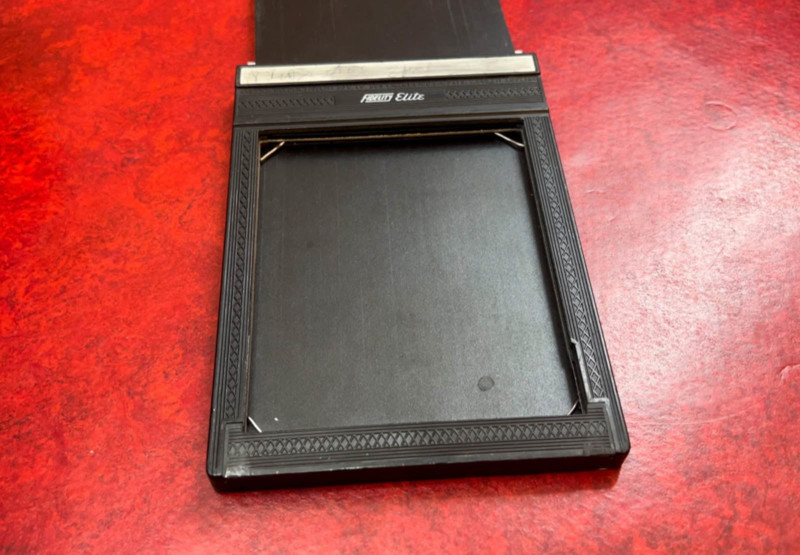Photographer Corrine Gretton-West booked a wet plate workshop with me before the COVID-19 pandemic began. Two years later we were finally able to do it.
The main subject was to get comfortable with the wet collodion process and to create images similar to the ones of spirit photographer William H. Mumler. Mr. Mumler created images (probably double exposures) where his clients could take a picture with their deceased relatives. The photograph of Mary Todd Lincoln with the “ghost” of her husband (Abraham Lincoln) was his most famous one.

Corrine came across my double exposure wet plates and that was the reason she contacted me in the first place.
About two months before the workshop Corrine surprised me with a question: “Can we build a wet plate camera together?”. I consulted with a friend and after a long visit to a DIY market, I was sure that we can do it.
A DIY camera and capturing ghosts. That sounds like a fun workshop if you ask me!
Building the DIY Wet Plate Camera
I could not capture everything in the 10-minute behind-the-scenes video above because I was focused on delivering a great workshop experience. I built a DIY camera kit, but I did not want to build everything. It was important for me that we put the major parts together in person, to really create a camera and form an understanding of how a camera works.

It took me a long time to figure everything out. I wanted to create a DIY camera that is adaptable and upgradeable without any special parts. It also should be able to shoot portraits and landscapes and if something breaks, I should be able to just go to a DIY market and get a replacement part.
The only thing needed was my self-designed camera back. I wanted to invent/adapt something that you can get in the market, but I was without luck finding such a part. The 3D printed design took many hours and a lot of filament to work as expected.

For the lens I went for a 150mm Leitz Dimaron (f/2.8), Elmaron (f/2.8) or Hektor (f/2.5). These lenses have three things in common. 150mm is kind of a “normal” lens for the 4×5 large format and they all have the same diameter. They are not too expensive if you buy them online. All of them are pretty sharp as well (the lens I used was a Dimaron).
I created a camera and lens support out of wood.
![]()

For the film/plate holder, I decided to go with standard international 4×5 holders. I had them water jet cut for a clean look and we modified it with silver wires because these are more resistant against acid and fit into the silver nitrate workflow

Here’s what the finished camera looks like:
![]()
Shooting with the DIY Wet Plate Camera
![]()
We were super happy with our first result. The portrait looked awesome and the resolution of the lens is great. We used two boxes for portrait distance.
![]()
The DIY ground glass also worked great. Here’s how you can make your own:
For me, it’s always exciting to see my idea come to life.
![]()
![]()
![]()
![]()
Here is a detailed scan of Corrine’s eye – a pretty impressive result from a 4×5 plate shot with a self-made camera and a projection lens.

For the spirit photographs that were inspired by Mr. Mumler, we went with wet plate double exposures. To make our lives easier, we marked all pose positions with sticky tape on the ground.

We decided to use my Dallmeyer 3B Petzval lens for the first double exposure because it fits better with the time when the original images were captured.

The second double exposure was a bit more modern but also produced the desired ghost look. For that, we used a Zeiss 300mm F4.5 Tessar lens. This lens is pretty new (about 2ß-30 years old) and is very crisp. I thought that makes more sense for this kind of image and also fits the story.

Here are more photos captured with the camera:
![]()
![]()
![]()
![]()
![]()
What a great 3-day workshop that was. We created so many different portraits and time flew so fast. At this point, I want to say thanks again to Corrine for visiting my workshop and trusting me with the camera design. I looking forward to seeing what she will do for her Ph.D. with the wet collodion process.
About the author: Markus Hofstaetter is a photographer who enjoys life and meeting people around the world. You can connect with him and find more of his work on his website, blog, Facebook, Twitter, and Instagram. This article was also published here.
Author: Markus Hofstaetter
Source: Petapixel



